Stars & Empire: 10 Galactic Tales Read online
Page 2
I was slammed against the front of my armor as the lander’s braking thrusters fired, causing us to decelerate rapidly as we neared the ground. The forward pressure ended abruptly as we came to a virtual stop 30 meters up. The landing jets mounted on the underside of the assault ship activated and eased us slowly down. We hit ground with a gentle thud. There was a metallic scraping sound as the locking bolt retracted, releasing me from the lander. I fell a few centimeters, my boots gripping the rubberized ledge along the bottom of the lander. One more step, and I’d be standing on Carson’s World.
“Fire team B, disembark. Come on, let’s move it!” The gravelly voice on the comlink belonged to Corporal Gessler, my immediate superior. Gessler commanded fire team B, my half of the squad, consisting of the five occupants of this particular lander.
I scrambled out of the harness and onto the rough, rocky ground. The dirt of Carson’s World was a reddish gravel, a sign of extremely high mineral content, particularly iron. There were some tufts of bristly weeds, scorched now from the ship’s landing thrusters, but most of the ground was bare dirt.
I glanced up at the tactical display and confirmed that there were no enemy contacts within 2 km. An experienced Marine would have done this before disembarking, but I was lucky this time—the LZ was well outside of the enemy’s defensive perimeter, and our landing was unopposed.
I was still scared out of my mind, but I managed to remember what I was supposed to do. The entire squad was forming a skirmish line at 100 meter intervals and heading northeast toward the last reported location of militia activity. If they had landed in the right spot (and if I’d thought to check out the status monitor I could have confirmed that they had) the 1st squad would be deploying to extend this line to the northwest of our position. The 3rd and 4th squad was to deploy in support about a klick behind our line.
I headed out toward my designated position at a slow trot. The rest of the squad was doing the same, except for Kleiner, who was retrieving the squad heavy weapon from the Gordon’s cargo hatch. She was just strapping the massive M-411 rocket launcher over her shoulder as I trotted by. An unarmored person couldn’t even have lifted the 300 kg weapon, but it was no trouble at all for an Marine in a combat suit.
The lander itself was in pretty rough shape. It was a disposable vehicle designed for a one-way trip to the surface. The heat shield was three-quarters gone, and the remaining portion was pitted and blackened. The frame, though bent and twisted in a few spots, was essentially intact. Although they appeared to be in decent condition, I knew from training that the Gordon’s thrusters pretty much burned themselves out during the landing. The ship would stay here, with its upper point defense laser remaining operational and providing the immediate area with some protection against missile attack.
If all went well we would never see the lander again, but if the mission went seriously awry, the Gordon, with its anti-missile defense and emergency ammunition and supplies, was our designated rally point. Of course, if the rally command came it would probably mean a lot of us were already dead.
I continued toward my assigned position at the trot, and I could see Will Thompson jogging off to my right. My position was second to last in line with Will positioned on the right flank of the squad. His blackened armor was speckled with a few remaining chunks of partially charred, heat-resistant foam. For all its equipment and capabilities, the Model 7 fighting suit was remarkably trim. The wearer looked like a slightly bulkier version of a medieval knight.
I glanced up at the mission clock—it read 00:21:05. All aspects of an assault were scheduled according to mission time, measured from the moment the first Gordon launched. This avoided any confusion, since ships were run on Earth Greenwich standard time, and every planet had its own timekeeping system. Mission time was consistent for all troops in an operation, whether a single platoon was engaged or an entire army.
I glanced up at the area display. I was about half a klick from my assigned position, jogging slowly. I was almost a minute ahead of schedule. I forgot the amplification factor of the powered armor, and my slow jog was moving me close to 40 kph and bouncing me a good two meters into the air with each step. It had just occurred to me that I should keep lower when Corporal Gessler’s voice barked over the comlink. “Cain, get your god-damned head down before you get it blown off!”
“Yessir!” I hoped I sounded confident, but I was pretty sure my voice cracked. I slowed my gait and concentrated on keeping low. Actually, there were no enemies showing on my display, so all of this was probably needless caution. But if there’s one thing they tried to beat into us in training, it was that carelessness gets Marines killed. I was ahead of schedule and there was no reason for me to rush, not when those big, exaggerated strides bounded me high enough to be a perfect target for any enemy within 1,000 meters.
I had drawn a pretty good mission for a first assault. Because we were trying to contact and rally the locals, we landed much farther from the enemy than we would have in typical assault. That gave us plenty of time to form up before we were likely to see any action. And because we were attacking an enemy who had recently seized the planet themselves, we didn’t have to face entrenched defenses. At least nothing serious. They hadn’t had time to build forts and bunkers, not yet.
I reached my assigned position, approximately 2 kilometers northeast of the landing zone, about 45 seconds ahead of schedule. I took a quick look down the line, and it seemed like most of the squad had reached the assembly point. The terrain was fairly rugged but relatively open for most of the way. Ahead of us the ground was rocky with scattered patches of the yellow-green fungus that seemed to be Carson’s World’s equivalent of grass. Our intel had advised that there was a militia group positioned somewhere in the area ahead, and we were here to establish contact.
“Second squad, I want a slow advance. Crank up to magnification level three. Report any signs of militia presence.” It was Sergeant Harris, the squad leader, on the comlink.
A slow advance was a very moderate pace, about 5 kph. I headed northeast, taking care to move very cautiously. I depressed my right thumb three times, activating my visual magnification system and toggling it up to level three. My vision was now enhanced, allowing me see much farther than I could with my unaided eyes. Level three is just enough to double the range at which you can pick out a man-sized object. In theory the price for amplification was a loss of detail, but the AI worked constantly to sharpen the images, so usually you couldn’t detect any serious fuzziness until you got to mag 10.
As we advanced, we moved into an area with scattered stands of scrubby, grayish brown trees. There were tangled clusters of the thorny weeds around each one. After about fifteen minutes of moving through the sparse woodlands, we came upon a section that was burnt out. The ground was blackened, and the few remaining trees were charred and splintered. It was obvious that there had been some pretty heavy fighting here. I knew I needed to report this to Corporal Gessler and the squad leader, and I took a deep breath. I was still thinking about what to say when Will Thompson beat me to it.
“Thompson reporting. Signs of some kind of action at coordinates 45.05 by 11. The area’s all burned out … looks like there was some pretty heavy fire here. Some kind of incendiary strike, maybe. Scanning … stand by for results.” There was a brief pause before he continued. “Temperature normal, spectral analysis negative. Looks like whatever happened here was at least a day ago.”
Will’s report was broadcast over the squad frequency, so the entire unit was aware of the situation. Nevertheless, after a brief pause (during which he’d probably reported to the lieutenant), Sergeant Harris addressed the squad. “Alright second squad, we know there was some kind of fight over near our right flank. Keep your eyes open and report any contact immediately.”
Over the next 20 minutes there were no additional contacts in our sector, but there were three other burnt out areas in the first squad’s zone. It appeared the enemy had been conducting search and destro
y ops in this area, trying to hunt down the locals who were operating out of these hills. There was no sign of casualties at any of the sites.
I was just thinking that the CAC troopers didn’t seem to be doing too well when I crested a small hill and saw what looked like six or eight bodies in the center of a blackened section of grasslands at the extreme edge of my visibility.
This time I didn’t hesitate. “Cain reporting. I see bodies up ahead.” My voice was shrill with excitement. I could feel the droplets of sweat running down the back of my neck.
The sergeant snapped back quickly. “OK, Cain. Get a grip, and give me a full report. Now!”
I swallowed hard and said, “Estimate six to eight bodies, range 1000 meters. Area burnt out like the others. No energy readings, no enemy contacts.” After a second I added, “Should I move up and check it out, Sarge?”
This was our most important sighting so far, and it wouldn’t have surprised me if the sergeant had told Will to check it out. But that’s not the way the Corps works. I may have been the new guy, and this may have been my first assault mission, but I was a Marine and I was expected to perform as one. As far as my field commander was concerned I wouldn’t have been assigned to an assault unit unless my instructors, combat veterans all, considered me ready. And that was good enough for him.
“Squad, halt. Cain, move forward and reconnoiter the area. Thompson, move in and provide cover.”
I started forward slowly, checking my display for any signs of artificial energy output that could indicate a hidden enemy. Negative. No power output. I glanced over and saw Will moving in on my flank. He maintained a distance of about 40 meters, to the right of and slightly behind my position.
Temperature readings were all normal as I approached the bodies. Whatever happened here, it had been at least a day ago, the same as the other sites. The area had clearly been subjected to some type of incendiary or high explosive fire—the grass was completely burnt and a small stand of trees nearby had been blown into charred matchsticks. I reported as I advanced, doing my best to sound calm, despite the fact that I was so scared I could hardly take a breath.
The bodies were clustered on a small rise. There were seven of them in total, three wearing the uniform of the planetary militia, the others in civilian miners’ dress. All of them were clad in heavy protective vests and metal helmets. Their faces wore horrid expressions, their features twisted in agonizing contortions. Their mouths and nostrils were caked with dried blood.
As my mind reached its conclusion, a warning light on my tactical display confirmed my deduction. Gas. “Cain reporting … seven bodies total. They appear to be victims of a gas attack. My sensors confirm the presence of…””—I looked up at the tactical display for the answer—“ … trace quantities of Kirax-3 nerve gas. Current concentration .032 parts per million … within the danger zone but below immediately lethal levels.”
So they were using gas to hunt down the locals. The militia’s little guerilla war must have been doing some pretty serious damage for the CAC forces to resort to these tactics. Nerve gas is a nasty weapon, largely ineffective against powered infantry, but deadly to second line troops lacking effective counter-measures. Still, it was a banned weapon, used only in the most desperate situations. By custom, those who employed gas could expect no quarter if the battle turned against them. Why would they take such steps in a fight over an unimportant hunk of ground like Carson’s World? I would get an answer to that question one day, but not until years later.
There were several moments of silence—the squad leader conferring with higher authority, no doubt. Then the comlink crackled. “Alright second squad, continue advance. Full chemical warfare procedures in effect.”
That last command didn’t really change anything. We still had our suits fully sealed, though the atmosphere of Carson’s World was well within the acceptable range. Normal operating procedures would have called for us to switch to filtered external air after twelve hours, leaving a full day of atmospheric capacity in reserve. Standard chemical warfare protocols dictated that we remain on our internal air supply/regeneration capacity until we were down to a four hour reserve. As with many of our procedures, there was a certain element of overkill. The atmospheric purification systems in our suits were perfectly capable of filtering out most known bacteriological and chemical agents, including Kirax-3 nerve gas. Still, better to be overly cautious than to see a whole company wiped out by some new or unexpected weapon.
It took us ninety minutes to cover the next two klicks. There were still no enemy contacts, but further up the line they found two more groups of bodies. The first had four corpses, definitely gas victims. The second group consisted of eleven bodies, but these were spread out over a much wider area. They were all wearing protective breathing gear and had been killed by rifle and grenade fire. Though we found no enemy bodies in the area, there were enough bits and pieces of CAC armor lying around for us to conclude the enemy had indeed suffered casualties in this firefight.
A full analysis indicated the battle had occurred within the past eighteen hours. From the look of the tracks leaving the location, the enemy had withdrawn back toward the settled area. Whether they had been repulsed or had simply completed their mission and retired was unclear.
We continued our advance, but about fifteen minutes after leaving the site of the last skirmish, we were ordered to halt. The first squad had made contact with the locals.
The militia had been advised of the basic tactical plan through scrambled pulse communications from Fleet, but they were not provided with specific schedules or locations for fear the enemy would intercept the transmissions. Their instructions were to be ready for action on short notice, and apparently they had listened.
We held our position for almost an hour, and if there is one thing I learned quickly in the Corps, nothing makes a sergeant crazier than watching his men relax with nothing to do. Fortunately, Sergeant Harris managed to come up with lots of ways for us to use the down time. We checked and re-checked our weapons, ran a system diagnostic on our armor and did a full analysis of the surrounding area—atmosphere, energy readings, chemical residue. Anything to forestall the sacrilege of a squad of Marines sitting around resting.
Finally the orders came. Our squad was to advance due east toward the settlement of Warrenville and take the position. Our attack would be supported by one fire team of the third squad. Warrenville was the smallest of the dozen or so towns that were the only inhabited areas of Carson’s World.
According to the locals, the town was lightly garrisoned and we could expect minimal resistance. Most of the guerilla activity had been to the north, and the enemy had deployed its strongest forces to that sector.
Our attack was essentially a diversion. We were to go in first, take the objective, and hold it against any counterattack (It was the “any” part that worried me the most). After the enemy had moved troops south to deal with us, the rest of our troopers would link up with the first platoon and a large group of militia for the main attack against the northern defenses. The third platoon would cover the eastern and southern perimeter, and move to intercept the enemy retreat.
We covered the first eight klicks in about two hours. The sergeant halted us just short of a small rise and sent Wilson, the platoon’s scout, to report on visibility from the top of the hill. I watched him scramble up the gentle slope and crouch down just below the crest. His recon armor had a different look than ours … sleeker, lighter.
“Wilson reporting. Good visibility to target, estimate distance to nearest structure 1,800 meters. Twenty to twenty-five buildings, look like modular plasti-steel structures. The terrain’s completely open between here and the town, no cover at all. Looks like there’s some kind of trench dug along the perimeter. No enemy sightings.”
No cover. Shit. That meant we’d be advancing almost two kilometers over open ground, probably under enemy fire.
“Alright Marines, form up at 30 meter intervals behind the cre
st. We’re gonna advance leapfrog fashion—first even numbers, then odd. Fifty meter intervals, grab some dirt between moves. Stationary troops, I want heavy covering fire. Assault to commence in 90 seconds.”
We were really going in. I’d been nervous about this for weeks and flat out scared to death since we stepped into the landing bay, but for some reason knowing we were finally heading into battle actually calmed me down. Maybe it was the training or some kind of silent resignation to my fate. Or the massive dose of adrenaline surging through my veins (some natural, some courtesy of the performance drugs my armor was pumping into me). Whatever it was, I suddenly had a clarity of thought I hadn’t felt in weeks now. I had been trained for this, and I knew I was ready.
I was the ninth one in line, so I was supposed to provide covering fire while the evens went forward. I was pressed against the ground behind the hill, my head maybe half a meter below the crest.
“Covering fire, now!”
I threw my arms up over the rise and rested my assault rifle on the ground in front of me. I had it set for burst fire, and when I pulled the trigger it began to spit out micro-bursts of four rounds every half-second. The fire left a faintly glowing trail of plasma as the hypersonic bullets ionized the air.
The M-36 auto-rifle is a state of the art projectile weapon. Specially designed for use with powered armor, the gun uses electromagnetic force to propel the projectiles at tremendous velocities. Without the need to carry their own propellant, the bullets are extremely small, and a single magazine holds 500 rounds. Despite their tiny size, the hardness of the osmium/iridium darts and the kinetic energy their velocity imparts to the target makes them extremely effective, even against armored enemies.
Two klicks was well within the range of our rifles, and the entire western edge of the town was raked by our fire. I still couldn’t see any enemy soldiers through the dust and shattered rocks we were kicking up, but the main purpose of our fire was to keep their heads down. Any hits at this point would be just so much dumb luck.

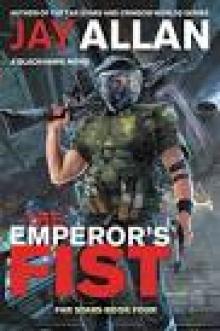 The Emperor's Fist
The Emperor's Fist Blood on the Stars Collection 1
Blood on the Stars Collection 1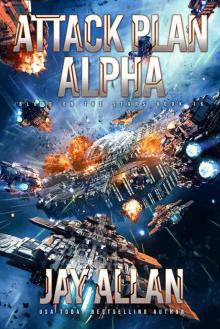 Attack Plan Alpha (Blood on the Stars Book 16)
Attack Plan Alpha (Blood on the Stars Book 16)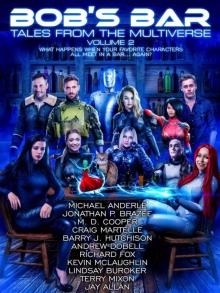 BOB's Bar (Tales From The Multiverse Book 2)
BOB's Bar (Tales From The Multiverse Book 2) The Others
The Others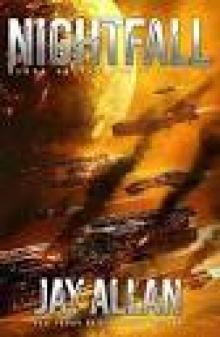 Nightfall
Nightfall Empire's Ashes (Blood on the Stars Book 15)
Empire's Ashes (Blood on the Stars Book 15) Wings of Pegasus
Wings of Pegasus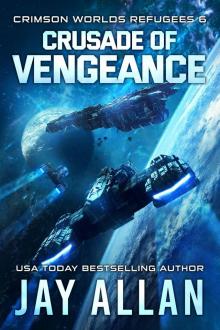 Crusade of Vengeance
Crusade of Vengeance The Last Stand
The Last Stand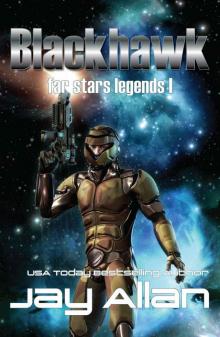 Blackhawk: Far Stars Legends I
Blackhawk: Far Stars Legends I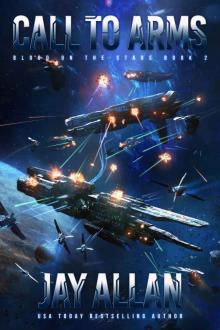 Call to Arms: Blood on the Stars II
Call to Arms: Blood on the Stars II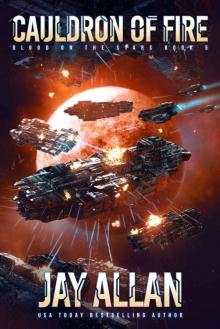 Cauldron of Fire (Blood on the Stars Book 5)
Cauldron of Fire (Blood on the Stars Book 5) Revenge of the Ancients: Crimson Worlds Refugees III
Revenge of the Ancients: Crimson Worlds Refugees III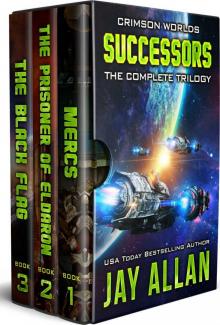 Crimson Worlds Successors: The Complete Trilogy
Crimson Worlds Successors: The Complete Trilogy The Grand Alliance
The Grand Alliance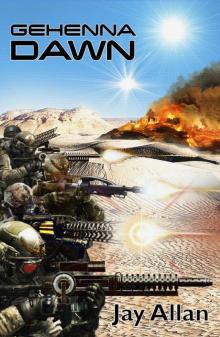 Portal Wars 1: Gehenna Dawn
Portal Wars 1: Gehenna Dawn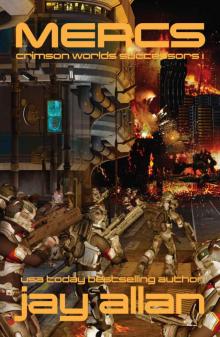 MERCS: Crimson Worlds Successors
MERCS: Crimson Worlds Successors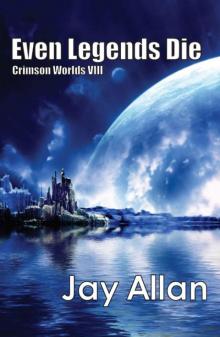 Crimson Worlds: 08 - Even Legends Die
Crimson Worlds: 08 - Even Legends Die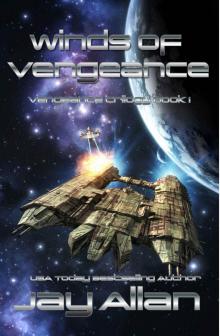 Winds of Vengeance
Winds of Vengeance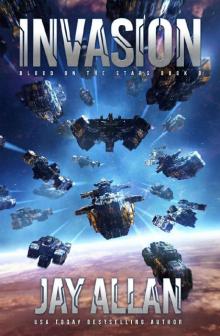 Invasion (Blood on the Stars Book 9)
Invasion (Blood on the Stars Book 9) A Little Rebellion (Crimson Worlds III)
A Little Rebellion (Crimson Worlds III)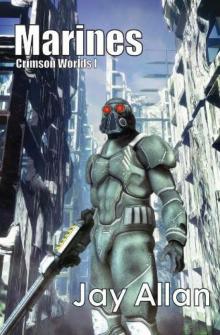 Marines
Marines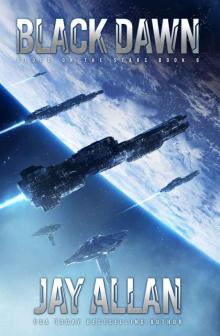 Black Dawn (Blood on the Stars Book 8)
Black Dawn (Blood on the Stars Book 8)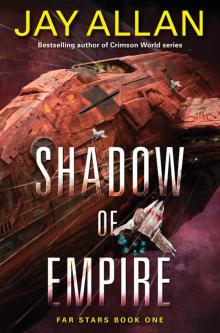 Shadow of Empire
Shadow of Empire Galactic Frontiers: A Collection of Space Opera and Military Science Fiction Stories
Galactic Frontiers: A Collection of Space Opera and Military Science Fiction Stories Winds of Vengeance (Crimson Worlds Refugees Book 4)
Winds of Vengeance (Crimson Worlds Refugees Book 4)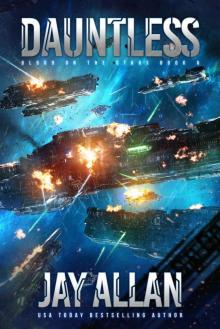 Dauntless (Blood on the Stars Book 6)
Dauntless (Blood on the Stars Book 6)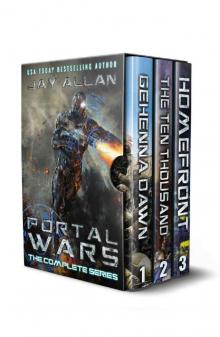 Portal Wars: The Trilogy
Portal Wars: The Trilogy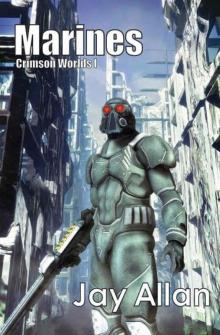 Marines cw-1
Marines cw-1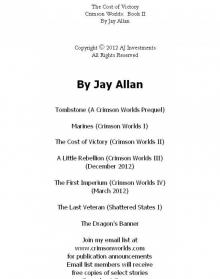 The Cost of Victory
The Cost of Victory Marines (Crimson Worlds)
Marines (Crimson Worlds) The Ten Thousand: Portal Wars II
The Ten Thousand: Portal Wars II The White Fleet (Blood on the Stars Book 7)
The White Fleet (Blood on the Stars Book 7)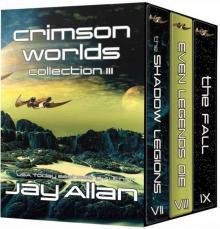 Crimson Worlds Collection III
Crimson Worlds Collection III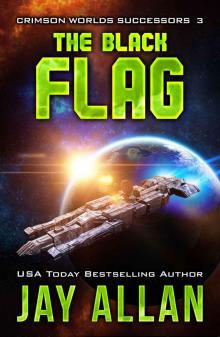 The Black Flag (Crimson Worlds Successors Book 3)
The Black Flag (Crimson Worlds Successors Book 3)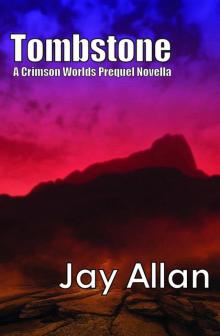 Tombstone
Tombstone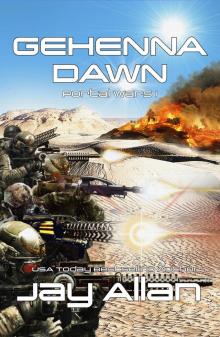 Gehenna Dawn
Gehenna Dawn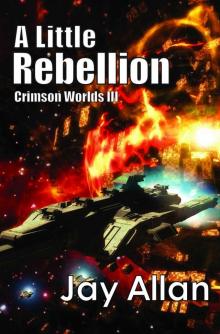 A Little Rebellion (Crimson Worlds)
A Little Rebellion (Crimson Worlds)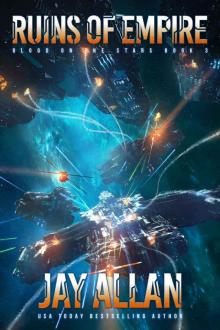 Ruins of Empire: Blood on the Stars III
Ruins of Empire: Blood on the Stars III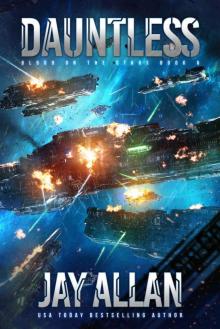 Dauntless
Dauntless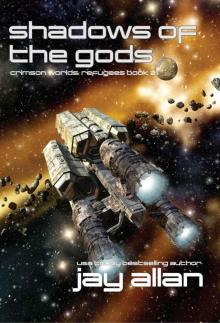 Shadows of the Gods: Crimson Worlds Refugees II
Shadows of the Gods: Crimson Worlds Refugees II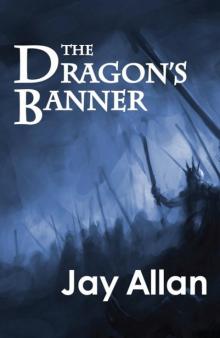 The Dragon's Banner
The Dragon's Banner Echoes of Glory (Blood on the Stars Book 4)
Echoes of Glory (Blood on the Stars Book 4)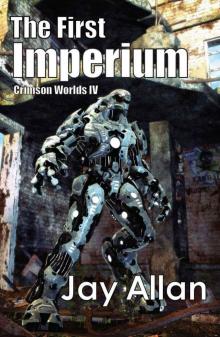 Crimson Worlds: 04 - The First Imperium
Crimson Worlds: 04 - The First Imperium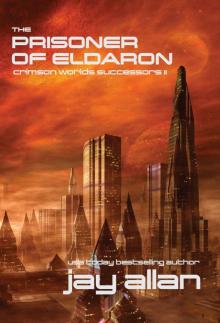 The Prisoner of Eldaron: Crimson Worlds Successors II
The Prisoner of Eldaron: Crimson Worlds Successors II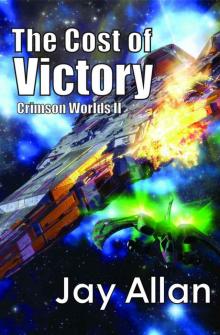 The Cost of Victory (Crimson Worlds)
The Cost of Victory (Crimson Worlds)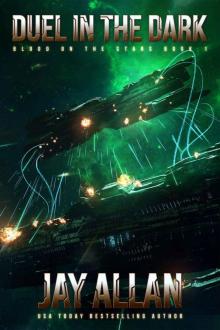 Duel in the Dark: Blood on the Stars I
Duel in the Dark: Blood on the Stars I Into the Darkness: Crimson Worlds Refugees I
Into the Darkness: Crimson Worlds Refugees I Crimson Worlds Refugees: The First Trilogy
Crimson Worlds Refugees: The First Trilogy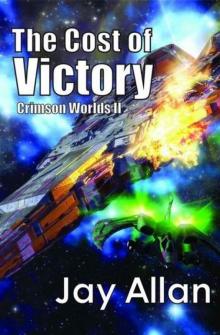 The Cost of Victory cw-2
The Cost of Victory cw-2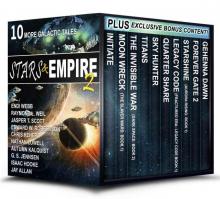 Stars & Empire 2: 10 More Galactic Tales (Stars & Empire Box Set Collection)
Stars & Empire 2: 10 More Galactic Tales (Stars & Empire Box Set Collection)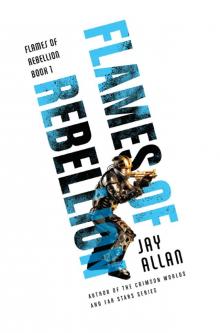 Flames of Rebellion
Flames of Rebellion Stars & Empire: 10 Galactic Tales
Stars & Empire: 10 Galactic Tales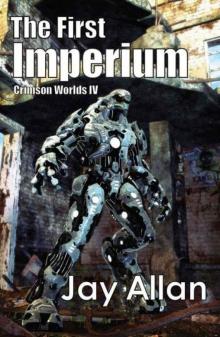 The First Imperium cw-4
The First Imperium cw-4 Crimson Worlds: 07 - The Shadow Legions
Crimson Worlds: 07 - The Shadow Legions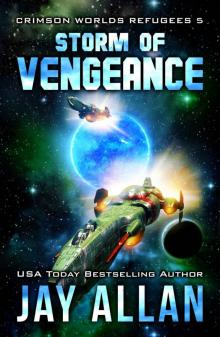 Storm of Vengeance
Storm of Vengeance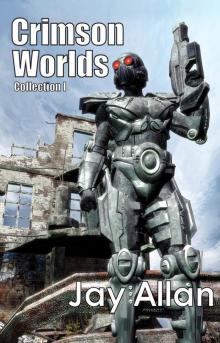 Crimson Worlds Collection I
Crimson Worlds Collection I Rebellion's Fury
Rebellion's Fury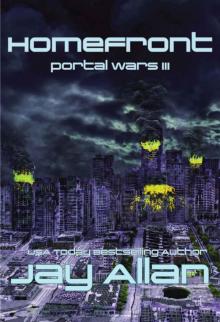 Homefront: Portal Wars III
Homefront: Portal Wars III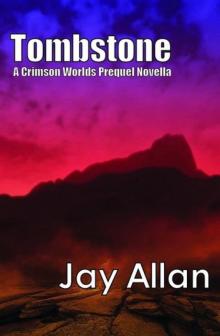 Tombstone (crimson worlds)
Tombstone (crimson worlds) Crimson Worlds: Prequel - Bitter Glory
Crimson Worlds: Prequel - Bitter Glory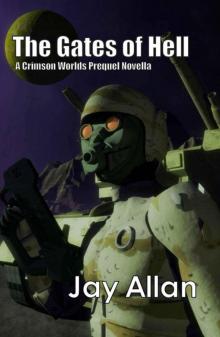 Crimson Worlds: Prequel - The Gates of Hell
Crimson Worlds: Prequel - The Gates of Hell The Fall: Crimson Worlds IX
The Fall: Crimson Worlds IX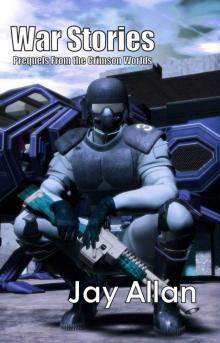 Crimson Worlds: War Stories: 3 Crimson Worlds Prequel Novellas
Crimson Worlds: War Stories: 3 Crimson Worlds Prequel Novellas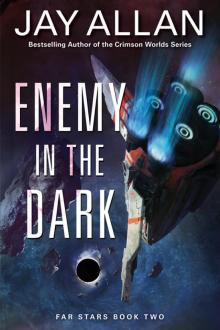 Enemy in the Dark
Enemy in the Dark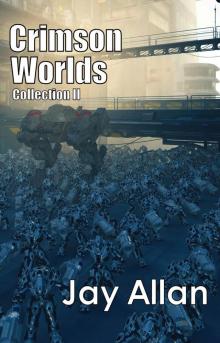 Crimson Worlds Collection II
Crimson Worlds Collection II